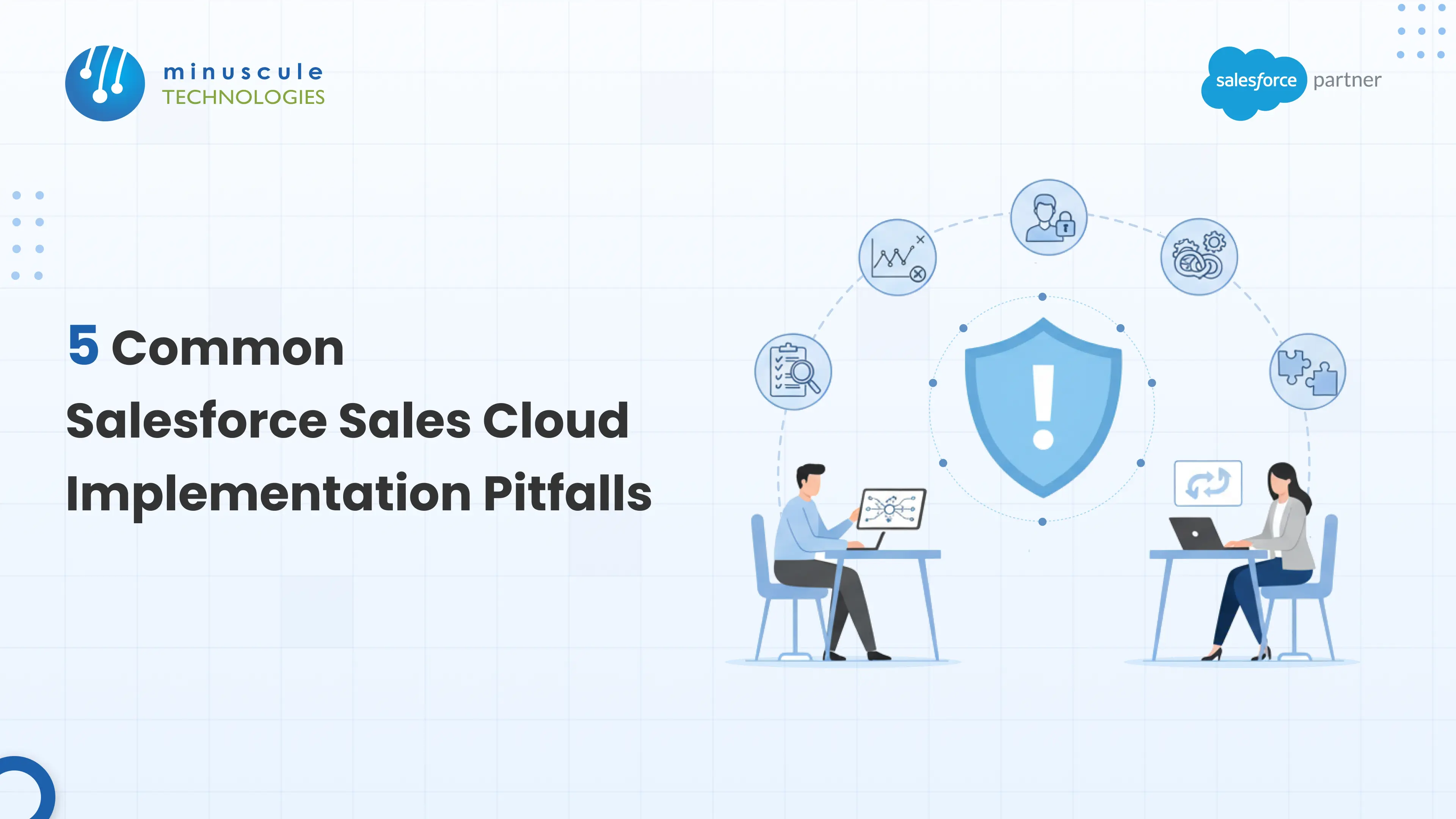
Salesforce Sales Cloud is the world's best CRM platform for a reason. But here's the reality: a powerful engine needs a skilled mechanic. A flawed implementation, often the result of poor Salesforce Consulting Services, doesn't just waste money; it frustrates your sales team, creates data chaos, and brings productivity to a grinding halt.
A significant majority of CRM projects fail due to avoidable mistakes. Organizations lose millions of dollars annually due to poor data quality. The good news? Most failures stem from the same predictable pitfalls. This article maps the top five traps, provides proven solutions to navigate them successfully, and shows how a solid foundation unlocks powerful automation and AI capabilities.
Starting Sales Cloud implementation without crystal-clear objectives is like embarking on a road trip without a destination. Organizations often initiate deployment without articulating business goals or KPIs, leaving teams with fragmented expectations.
When planning is inadequate, implementations appear disorganized, leading to low adoption, wasted investment, and demoralized teams.
Your legacy system likely contains years of accumulated chaos: duplicate records, outdated contacts, inconsistent formatting, and incomplete entries. Organizations often believe they'll "clean it up once the system is ready" - this approach leads to disaster.
Data quality issues lead to poor adoption, ineffective strategies, and diminished trust. More than half of Salesforce Data Migration Services projects experience delays due to underestimated complexity. When sales reps lose confidence in the data, they abandon the system entirely.
Sales professionals are measured on quota attainment, not CRM logging. They view data entry as administrative overhead. The false assumption "If we build it, they will come" destroys implementations.
A significant majority of CRM projects fail due to human factors, not software limitations. Sales teams typically leverage only half of the available features when training gaps exist, often reverting to spreadsheets and sticky notes.
Salesforce's flexibility is both its greatest strength and biggest trap. Stakeholders request endless customizations - each seems small individually, but collectively they balloon costs and create maintenance nightmares.
Over-customization, often a side effect of poorly planned Salesforce Customization Services, increases complexity, making systems difficult to maintain and upgrade. It creates dependency on specialized knowledge and reduces scalability, leading to performance bottlenecks and upgrade difficulties.
Many organizations attempt to manage implementation "by committee" or assign it as a side project. Internal teams often lack specialized knowledge for full-scale deployment, particularly around data migration, integration architecture, and adoption strategies.
Without proper governance and expertise, implementations fail to deliver expected ROI, leaving organizations with partially deployed systems nobody trusts.
Success begins by defining what "success" looks like.
Essential actions:
Clean data, often achieved through dedicated Salesforce Administration Services and governance, is the foundation of Sales Cloud success; this is non-negotiable.
Critical steps:
People drive technology adoption, not the other way around.
Key strategies:
Use Salesforce's declarative tools first. The code should be the last resort.
Best practices:
If you lack internal expertise, a Salesforce Certified Partner is an investment, not a cost.
Partner benefits:
Minuscule Technologies offers engineering partnerships we build, refactor, and modernize your Salesforce environment with AI-powered DevOps Services and cost optimization.
A smooth Salesforce Implementation Services project unlocks the Sales Cloud's true power: freeing up time for representatives to focus on selling.
Key Automation Wins
Salesforce Sales Cloud implementation is a significant initiative, but common pitfalls are entirely avoidable. Success isn't primarily about technology—it's clear strategy, clean data, disciplined execution, and relentless focus on your people.
Get the foundation right, and you're building a scalable engine for growth that eliminates administrative friction, provides real-time pipeline visibility, enables data-driven decisions, and leverages AI to amplify human capability.
Your pathway to success:
At Minuscule Technologies, our engineering partners (Salesforce Partner) are dedicated to building industry-ready Salesforce solutions. We specialize in strategic Salesforce Consulting Services, Salesforce Data Migration Services, organization re-engineering, agentic DevOps Services, and enterprise Salesforce Integration Services.
Our engineering partner mentality means we become an extension of your team, delivering solutions that are technically sound and strategically aligned with your business objectives.
Ready to plan your Sales Cloud implementation with confidence?
Contact Minuscule Technologies for a free strategy consultation. Let's build a Salesforce environment engineered for efficiency, agility, and scale - together.
Are you looking to harness the complete potential of Salesforce Solution? Have a free consulting session with our expert team. We are ready to lend our hand to examine your CRM, Consolidate the Current Data Management, and figure out the inefficiencies that lay as a hindrance in harnessing the Salesforce power.
Contact Us Today